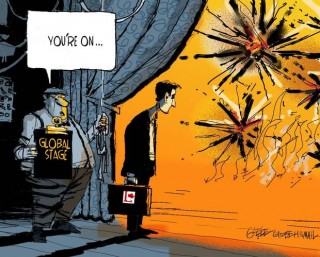Going into the election, set for September 20th, The Globe and Mail presents a summary of the major parties’ challenges and strategies. It reviews the leaders, current standings and the outcome of the 2019 election.
Introduction to the article (perhaps by having everyone read it):
As we head into an election, any student aged 18 and over is entitled to vote—indeed, voting is listed as a responsibility of citizenship. This lesson involves an overview of the primary leaders and parties vying to form our next government and is intended for secondary school students, although it is not beyond the scope of senior public school students.
Subject Area(s) covered
Social studies, current events, political science
New Terms to explain
Robust, microbiology, pro-choice, unilateral, wedge, galvanizing,
Materials Needed
Access to the article
Key things students can learn from this lesson
- The names of the parties and their leaders for the coming federal election;
- Key challenges and strategies for each party;
- Factors and events that can affect the way people vote.
Action (here’s how we’ll do it)
Introduce the lesson with a short Q&A discussion about the coming election. Probe to see how many know the names of the parties and their leaders who are running for office. Ask how many students, if eligible, intend to vote. Note that it is important that they contribute to our democracy by exercising their right and their responsibility to vote.
To make this as painless as possible—politics can be a deadly boring subject for some young people—this lesson takes the form of a matching exercise. Students will use the article as their source of information to complete their work.
Worksheet – (Download the Worksheet & Answer Key here): Using the attached article as your source, match items in Column A with the appropriate answer in Column B.
Consolidation of Learning
- When students have finished, discuss the lesson, ensuring they are clear about the names of the parties and their leaders and a few of the key issues.
Success Criteria
Students demonstrate a familiarity with:
- The names of the parties and their leaders for the coming federal election;
- Key challenges and strategies for each party;
- Factors and events that can affect the way people vote.
Confirming Activities
- As the date approaches, ask students about the election and discuss the outcome after Sept 20th.
Helpful Internet Searches
Activities to do together
- Discuss election issues with friends and family;
- Visit and explore the different parties’ websites to learn more about the parties and the people and their approach to key issues;
- Give your parents or caregivers the quiz, above, for fun.

